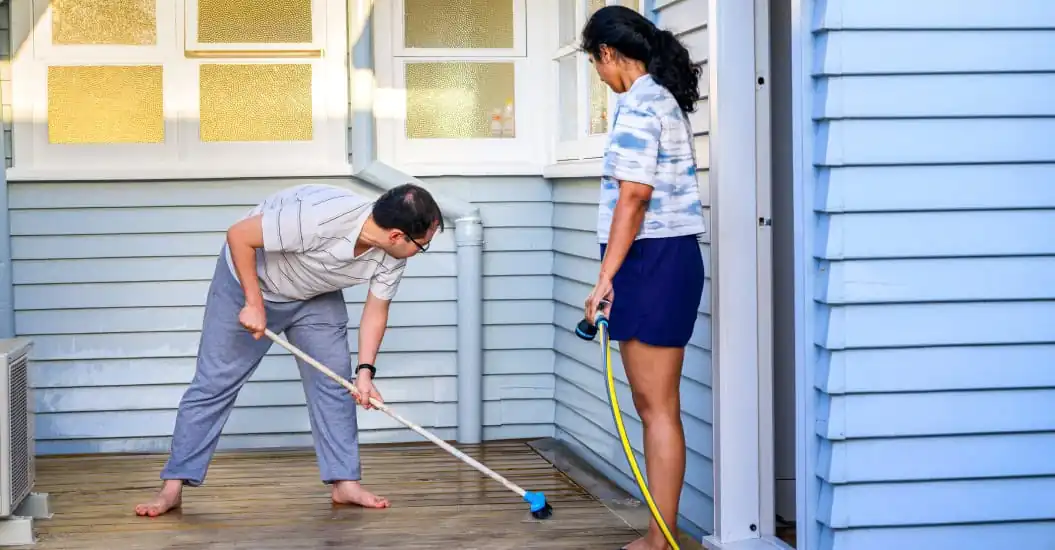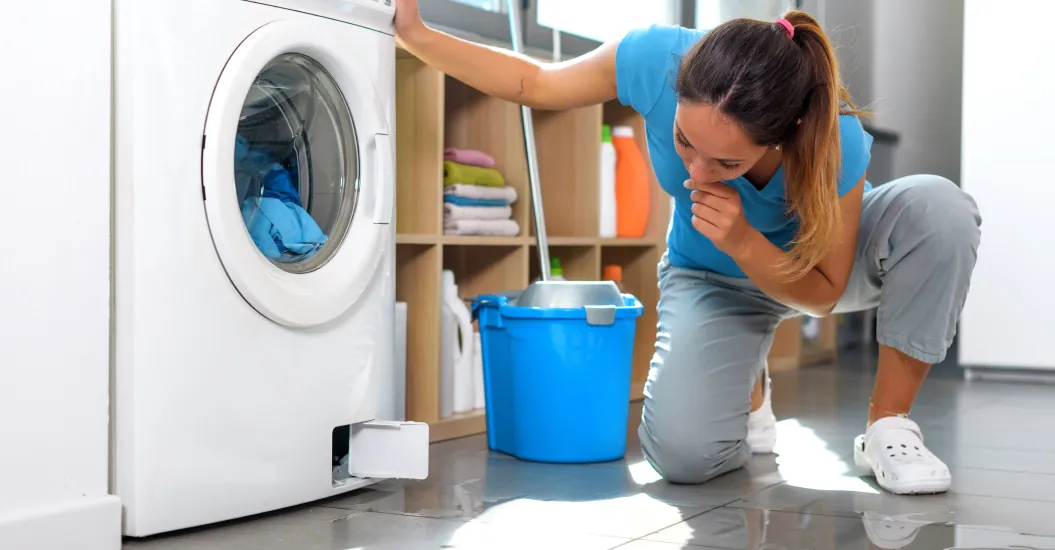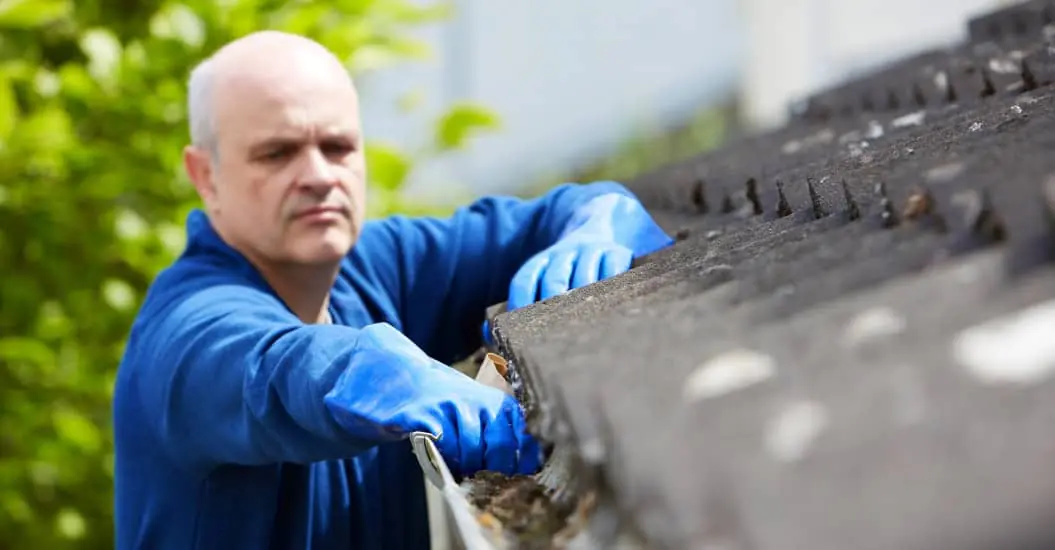Giving your home a deep clean isn't just about keeping it tidy, it's also about preventing problems before they start! By tackling wear, mould, and pest infestations, you can keep your surfaces looking great and make your home healthier. Plus, you'll catch maintenance issues early, so you can avoid bigger problems later. It's a win-win for your home and your peace of mind!
It's important you understand what gradual damage means for insurance cover and potential claims, so Tower has put together a great guide to help you understand gradual damage, and what it means for your house insurance policy.
When it comes to deep cleaning your home, a structured approach is key. Create a checklist that covers every room and space inside your house. Here are some tips to help you get started and make sure your home is in tip-top shape and ready for the months ahead.
Floors
Timber
Use a string or microfibre flat mop when cleaning your wooden floors. The heat and moisture from steam mops can cause significant damage to the coating, and warp the boards.
Vinyl
A simple water and vinegar mix should easily remove any dirt or scuff marks. If your vinyl flooring is old and worn, it may be a good idea to replace it before it gets worse and becomes a trip hazard.
Carpet or rugs
How frequently you vacuum usually depends on how often your carpet or rugs are walked on and whether you have pets (or kids!) at home. With a deep clean, you can either attack any visible spots with a carpet stain remover, or treat your carpet to a steam clean to get deep into the fibres.¹
Walls and ceilings
Start off your deep clean by getting rid of any dust and cobwebs, helping keep your rooms fresh and healthy for anyone in your household who might have a dust allergy.
You can follow up by using a tool like a magic eraser where you only need to add water. They're great for removing those stubborn marks.
Removing the dust and giving your walls and ceilings a wipe down can sometimes expose issues, such as water damage. Bubbling or peeling paint or wallpaper can be a sign of water damage. If the problem is well-established, you will see cracks, water stains, or even mouldy patches.² Getting to the source of the problem and fixing it quickly may help a minor fix become a costly exercise.
Windows and doors
When you don't clean your windows and doors regularly, things like chalking, mould growth, and corroded fixings can quickly lead to rotting or rusted hinges.³
Clean dust off all windows and door hinges, tighten any loose screws, and take a look around the edges of your windows for any signs of mildew. You can treat this with a simple water and vinegar mix before it's too far gone.
Check windows and doors open, close, and seal properly by doing this several times, and look for any gaps where air might escape or if there is any stubborn movement. This will give you a quick indication if any maintenance or seal repair work is required by an expert.
Kitchen
Fire safety and prevention is a big one to tick off when you're doing a deep clean of your kitchen. Ovens and electrical appliances can be major hazards and need regular checking.
If you have a gas oven, check for leaks. Clean out the burners and oven to remove built-up grease, which can cause a fire to spread faster. Investing in a carbon monoxide detector is a great idea if you have gas appliances.
Once you're done with your oven, take a look at your stovetop extractor fan. Remove the filters and give them a clean. Many of them can run through a hot cycle in your dishwasher. Otherwise, you can give them a wash by hand in your kitchen sink using warm water and dishwashing liquid.
Take a look at your appliances, making sure there are no frayed or damaged cords or exposed wires, and immediately replace any in this condition. Also, make sure you're not overloading your power points, they can short circuit your home and are a major fire risk. Have a look at our 'Power up your plugs like a pro' blog for more tips on avoiding an electrical overload.
Bathroom and laundry
To keep the bathroom well vented and reduce condensation that can lead to mouldy walls, make sure to check your exhaust fan for any dust buildup.
A great way to reduce condensation in the bathroom following a bath or shower is to keep the fan going for a little longer, open any windows, and wipe down the walls, windows, and shower glass after each use.
Mould and mildew not only pose a health risk to you and your family, but can also cause significant damage, most of which can't be seen with the naked eye. Clean and treat any visible mould or mildew, and get a professional in to take a look at anything that you aren't sure about.
These tips are also relevant for your laundry room. It's important to make sure you're checking your appliances and properly ventilating the space. Take a look at our tips on how to use your dryer properly to help avoid a fire.
Heating, ventilation, and air conditioning units (HVAC system)
It's important to check that these units are operating efficiently and safely, minimising any fire risk and potentially saving you on energy costs.
Check and replace your air filters if they're dirty and full of buildup to promote better air quality. Take a look at the condensation drain and empty it when required to prevent water overflow and potential damage.
Like all electrical appliances, inspect the wiring and connections for any signs of damage or wear. If you notice any issues, turn off the unit and get in touch with a professional to make the necessary checks and repairs.
It's a great idea to lock in a regular professional maintenance check, especially before the start of winter and summer when heat pumps and air conditioners are on full blast!
Schedule regular maintenance
There's a lot to keep on top of, so establishing a routine for regular cleaning and maintenance is vital for helping to avoid unexpected issues. Inspecting for leaks, keeping your property clear of clutter, and changing things like air filters and smoke alarm batteries will go a long way toward protecting your home.

Looking for house insurance?
Save $200 on new, eligible house insurance policies with promo code SWEETDEAL.*






